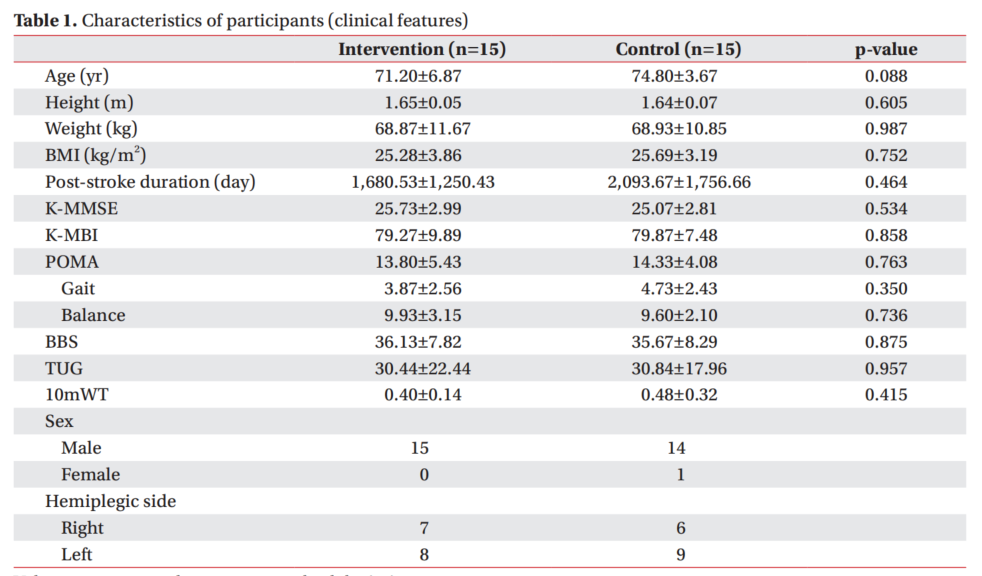Objective :To investigate the effect of anti-gravity treadmill gait training on gait function, balance, and fall risk in stroke patients.
Methods :This study included 30 patients with stroke (mean age, 73 years). All subjects were randomly divided into two groups. The intervention group performed anti-gravity treadmill training for 20 minutes, five times per week for 4 weeks. The control group received conventional gait training for the same duration. To assess fall risk, the Tinetti Performance-Oriented Mobility Assessment was measured. The Berg Balance Scale , Timed Up and Go test, and 10-m walk test were measured to assess dynamic balance. All scales were measured before intervention and at 4 weeks and 12 weeks after intervention. Methods :This study included 30 patients with stroke (mean age, 73 years). All subjects were randomly divided into two groups. The intervention group performed anti-gravity treadmill training for 20 minutes, five times per week for 4 weeks. The control group received conventional gait training for the same duration. To assess fall risk, the Tinetti Performance-Oriented Mobility Assessment was measured. The Berg Balance Scale , Timed Up and Go test, and 10-m walk test were measured to assess dynamic balance. All scales were measured before intervention and at 4 weeks and 12 weeks after intervention.
Article cited in:Ann Rehabil Med 2022;46(3):114-121
Article link:https://doi.org/10.5535/arm.22034
After the onset of stroke, patients occasionally experience diminished balance and asymmetrical weight support, which provokes secondary problems, such as the loss of functional gait, restriction of movement, and falls.
Various treatment modalities are applied in rehabilitation therapy to improve patients’ dynamic balance and lower their fall risk; anti-gravity treadmill training has been actively researched as a method of gait training in recent years. Anti-gravity treadmill was developed by the National Aeronautics and Space Administration (NASA) to train astronauts for postural and movement control in space. Inside an anti-gravity treadmill machine, patients can walk with reduced weight load and intra-articular pressure in the lower limbs; therefore, it is an appropriate gait training approach for patients with muscle weakness.

The anti-gravity treadmill training used in this study was probably more helpful in correcting the gait posture because it visualized the patient’s gait patterns on the monitoring screen during the training. Kurz et al.reported that neuroplasticity was improved after anti-gravity treadmill training in children with cerebral palsy and that it helped enhance muscle tissue and gait speed.
In conclusion, this study showed that anti-gravity treadmill training enhances dynamic balance and gait speed and effectively lowers fall risk in stroke patients. Therefore, anti-gravity treadmill training can be a beneficial alternative therapy to conventional gait therapy for improving gait function and balance in stroke patients.